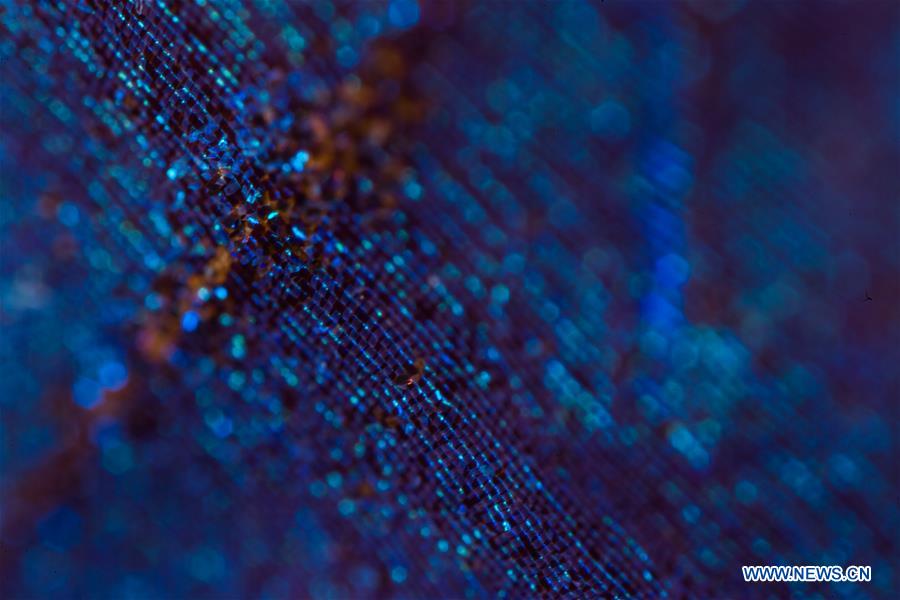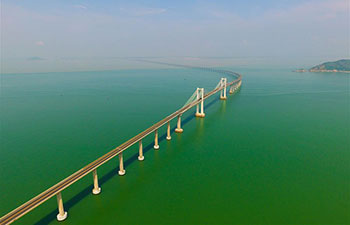
Photo provided by Australian National University (ANU) shows a close-up of a blue Morpho butterfly's wing at ANU in Canberra, Australia, May 16, 2017. Butterfly wings could be used to inspire new technology in solar cells, said ANU researchers, adding that "filtering" light could be a major feature of future solar projects. (Xinhua/ANU)
CANBERRA, May 17 (Xinhua) -- Butterfly wings could be used to inspire new technology in solar cells, according to researchers at the Australian National University (ANU) who said that "filtering" light could be a major feature of future solar projects.
Taking inspiration from the rare Peruvian butterfly, Morpho Didius, which has wings featuring tiny nanostructures which "scatter light to create a striking blue iridescence," Dr Niraj Lal from the ANU's Research School of Engineering said similar, man-made nanostructures could be used to finely control the direction of light in further experiments in the fields of architecture and even stealth.
"There's a whole bunch of potential new applications using our light-control technique, including next-generation solar cell, architectural and stealth technologies," Lal said in a statement detailing the research on Wednesday.
"Techniques to finely control the scattering, reflection and absorption of different colors of light are being used in the next generation of very high-efficiency solar panels.
"Being able to make light go exactly where you want it to go has proven to be tricky up until now."
Lal said the aim of the ANU's experiments was to absorb all of the blue, green and ultraviolet colors of sunlight in the "perovskite" layer of a solar cell, and all of the red, orange and yellow light in the "silicon" layer, known as a tandem solar cell with double-decker layers.
He said perfecting this technique could open the door to applications in architecture, whereby windows could filter certain colors of light, and stealth, such as by making opaque objects transparent to certain colors and vice-versa.
"We were surprised by how well our tiny cone-shaped structures worked to direct different colors of light where we wanted them to go," Lal said.
"Using our approach, a window could be designed to be transparent to some colours non-see through and matte textured for others, so there are very cool potential applications in architecture."















